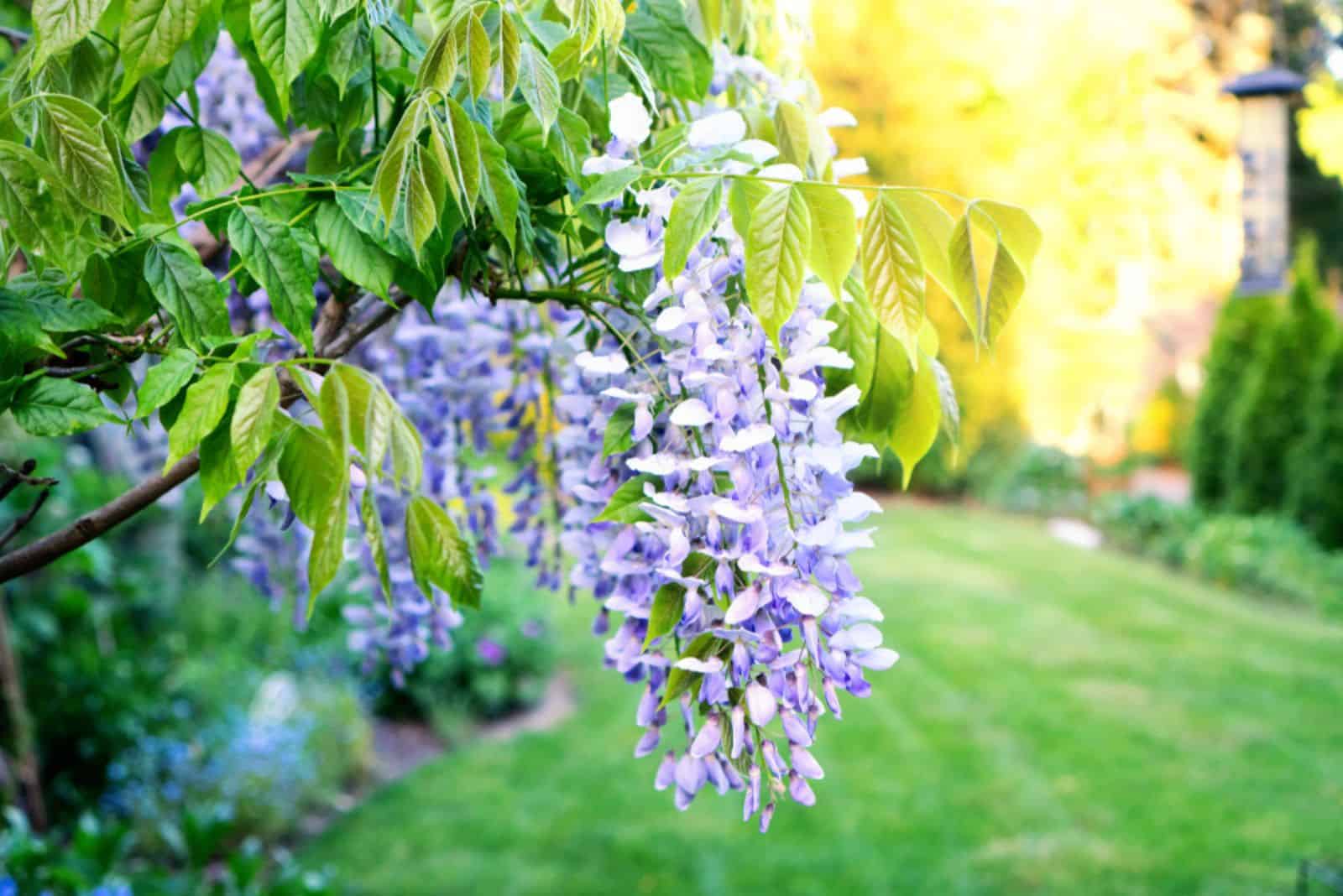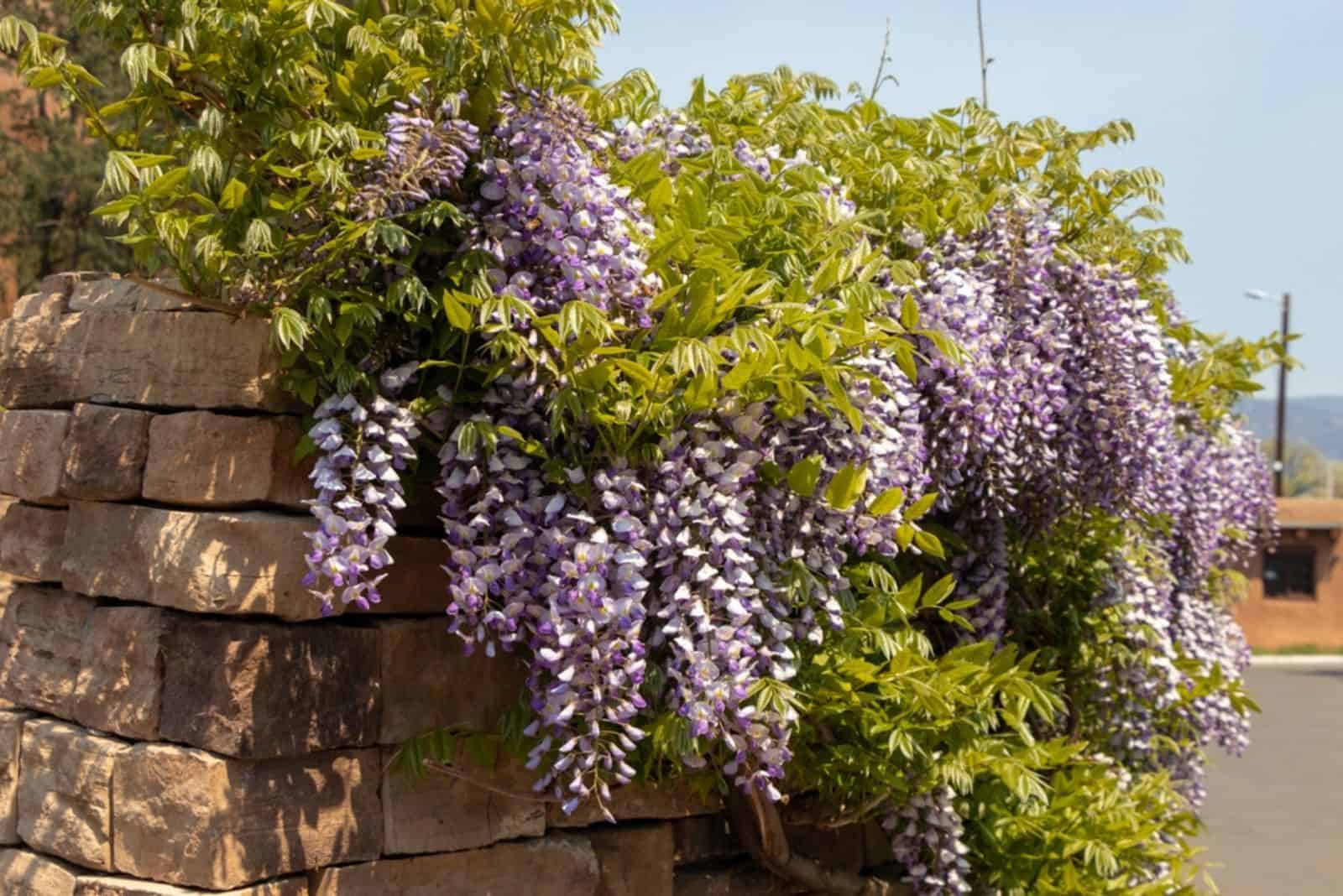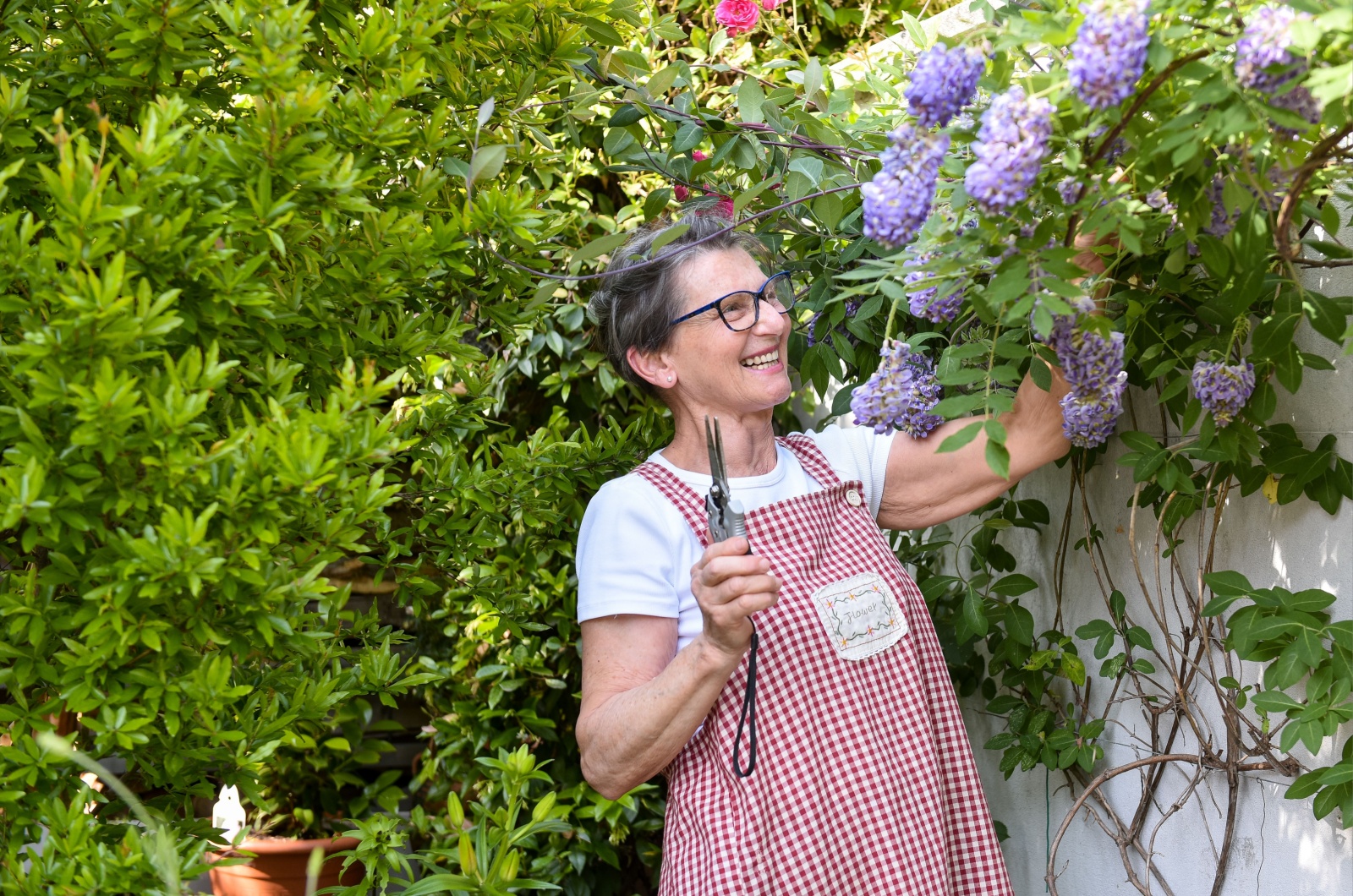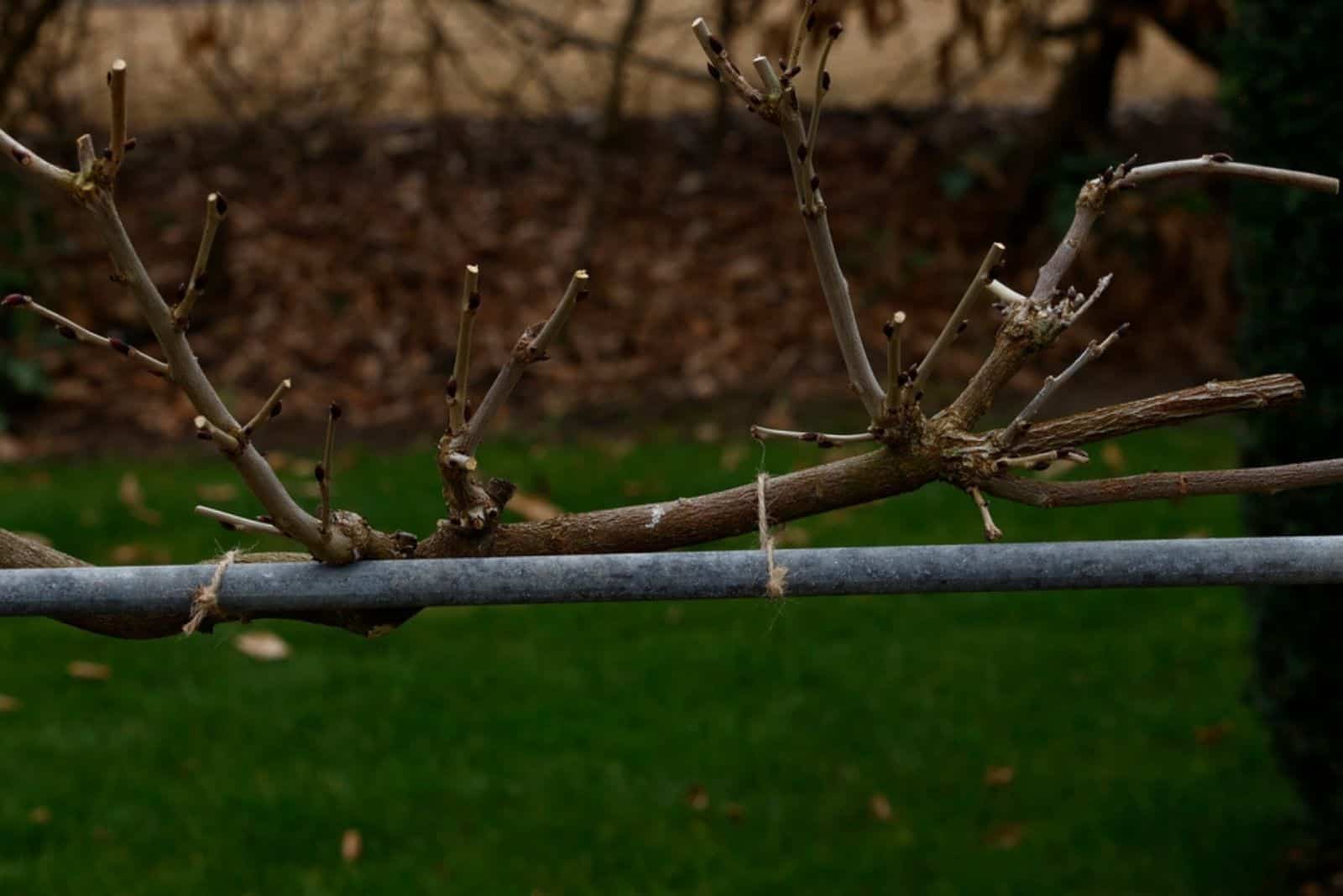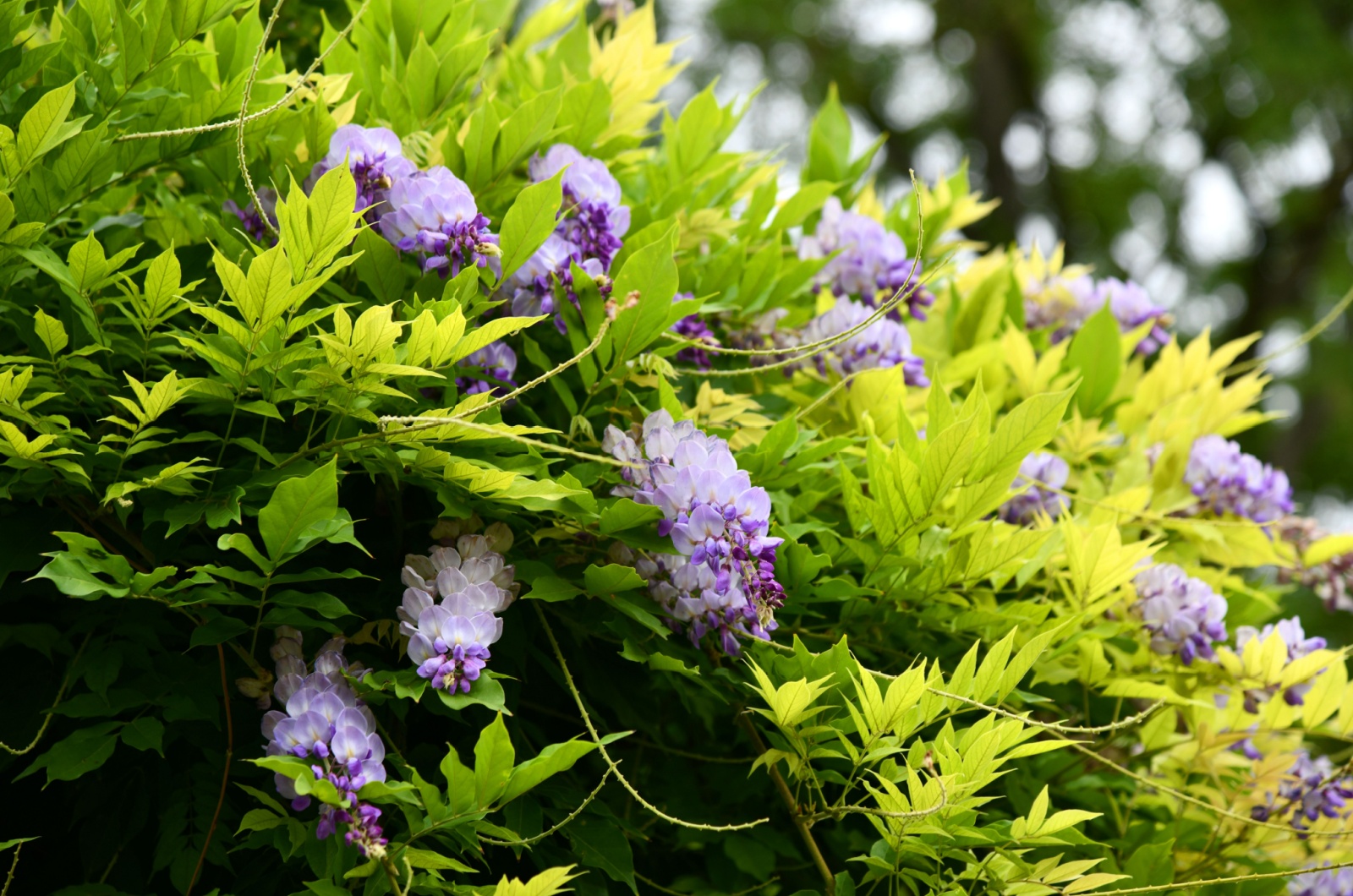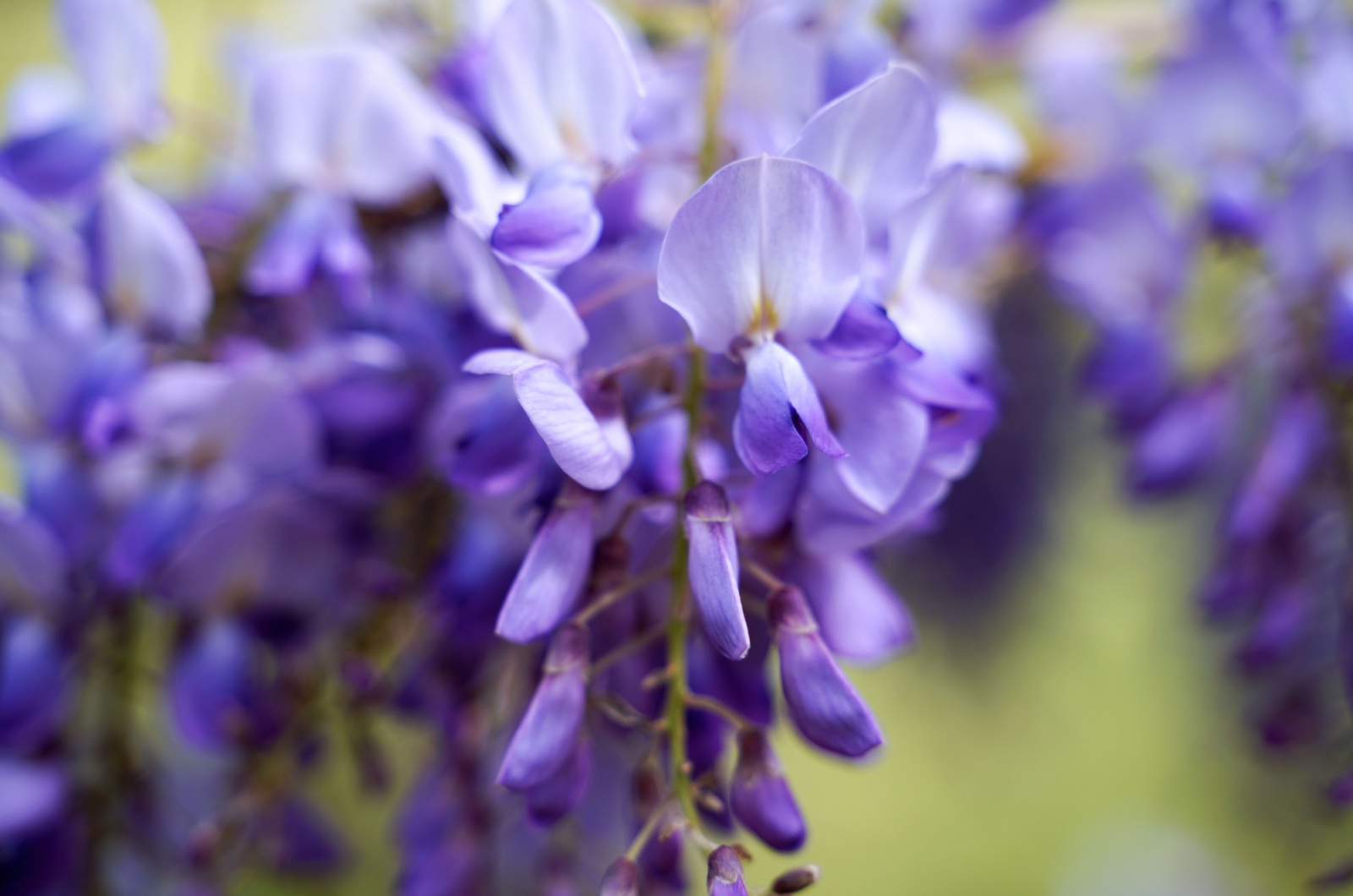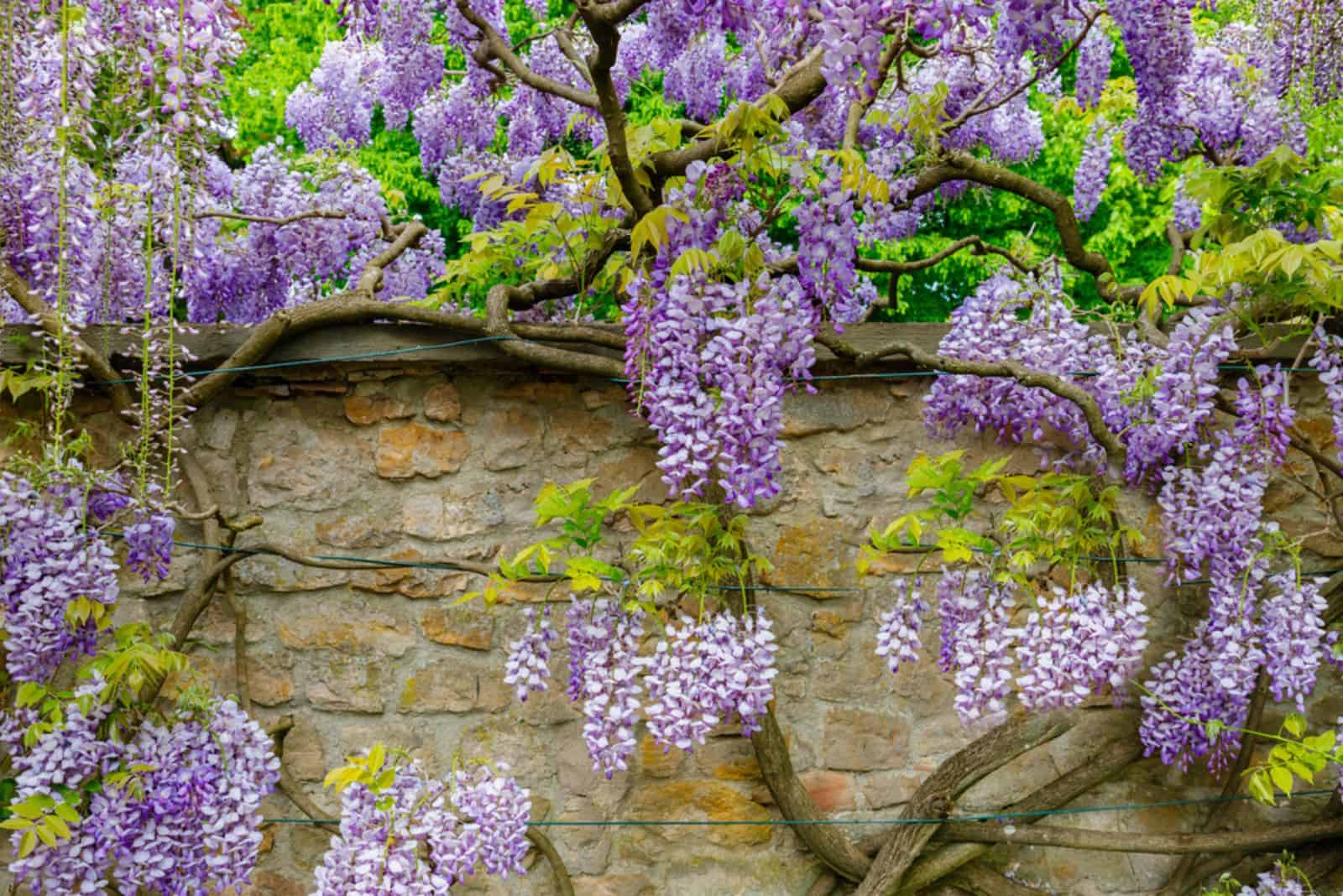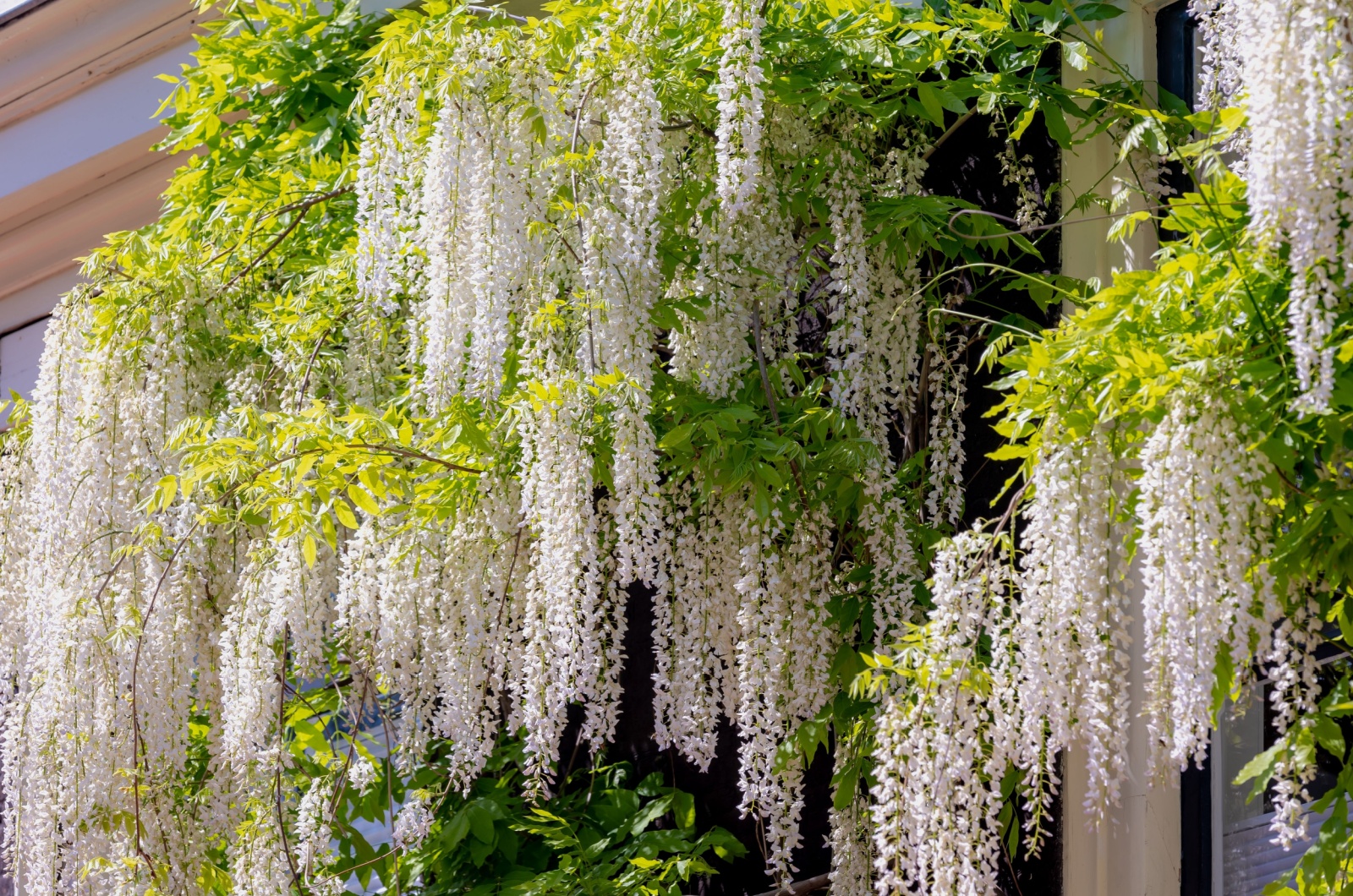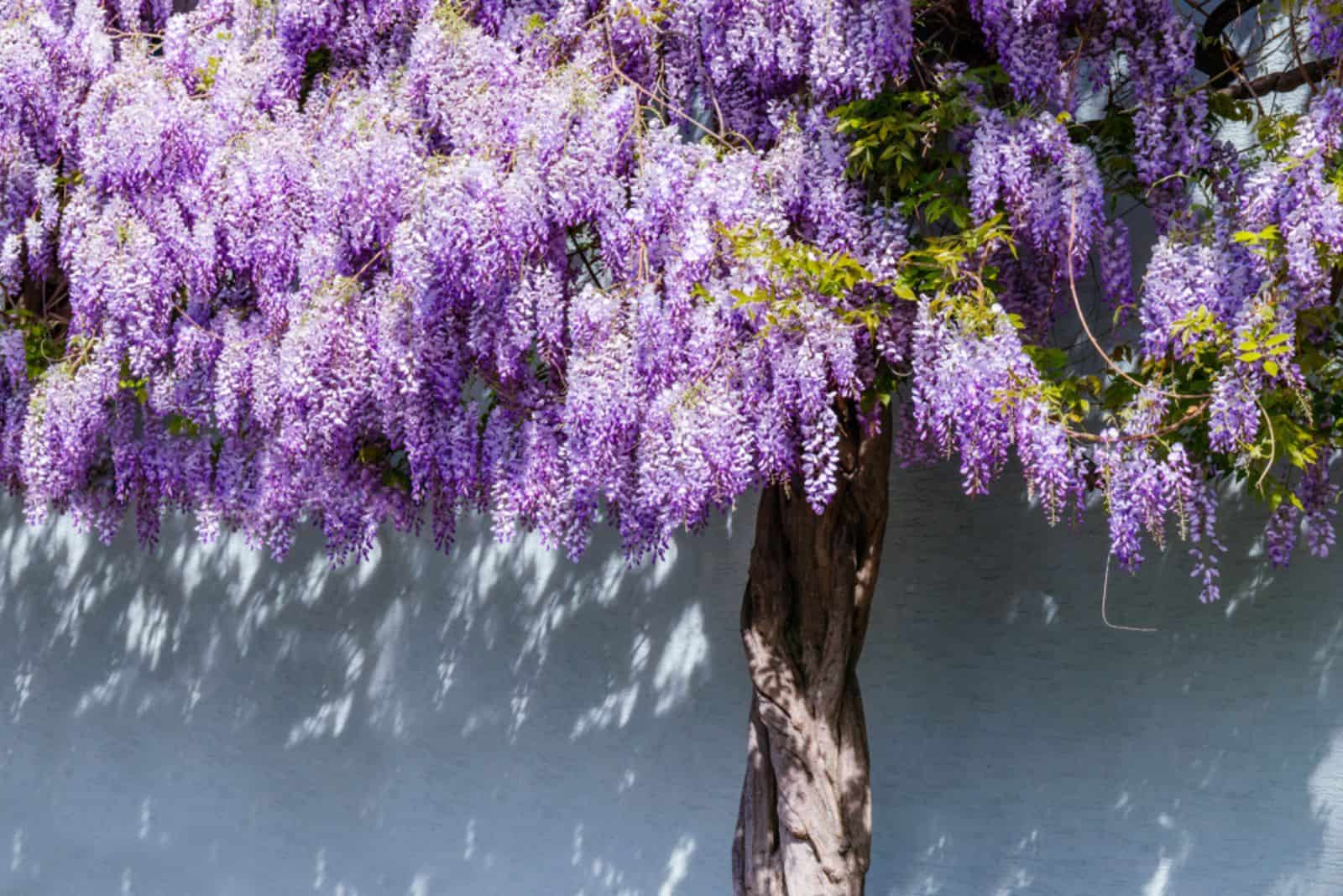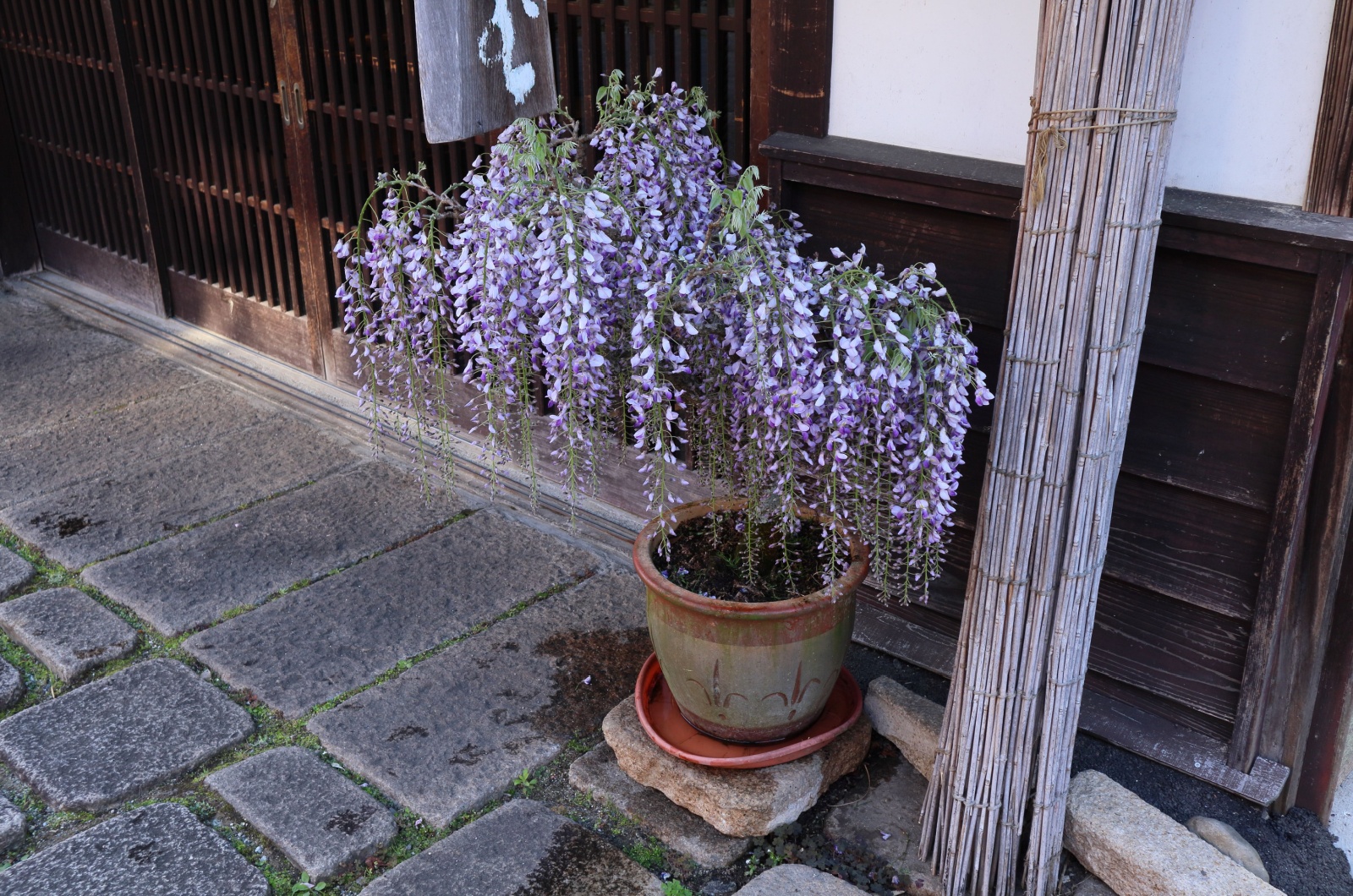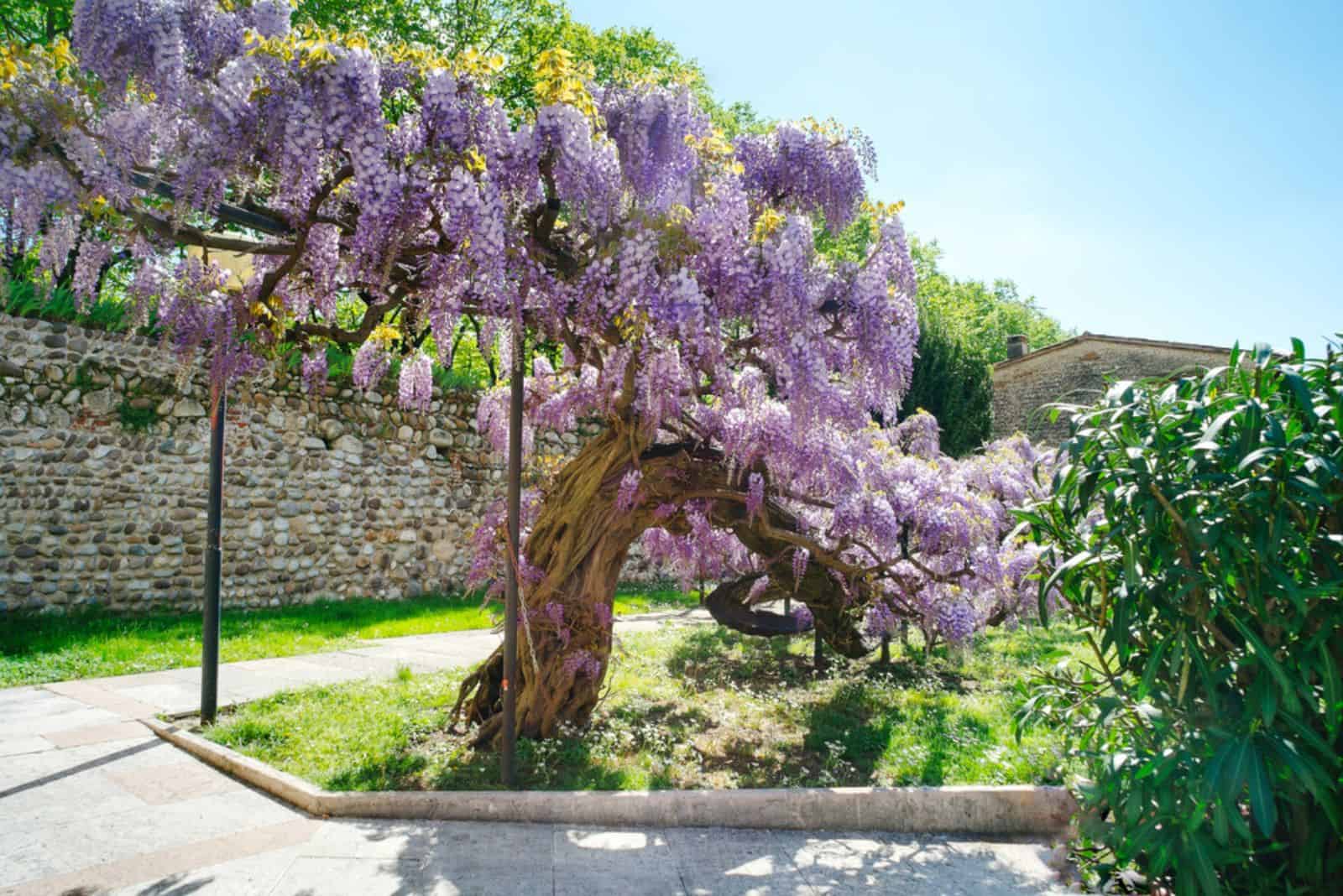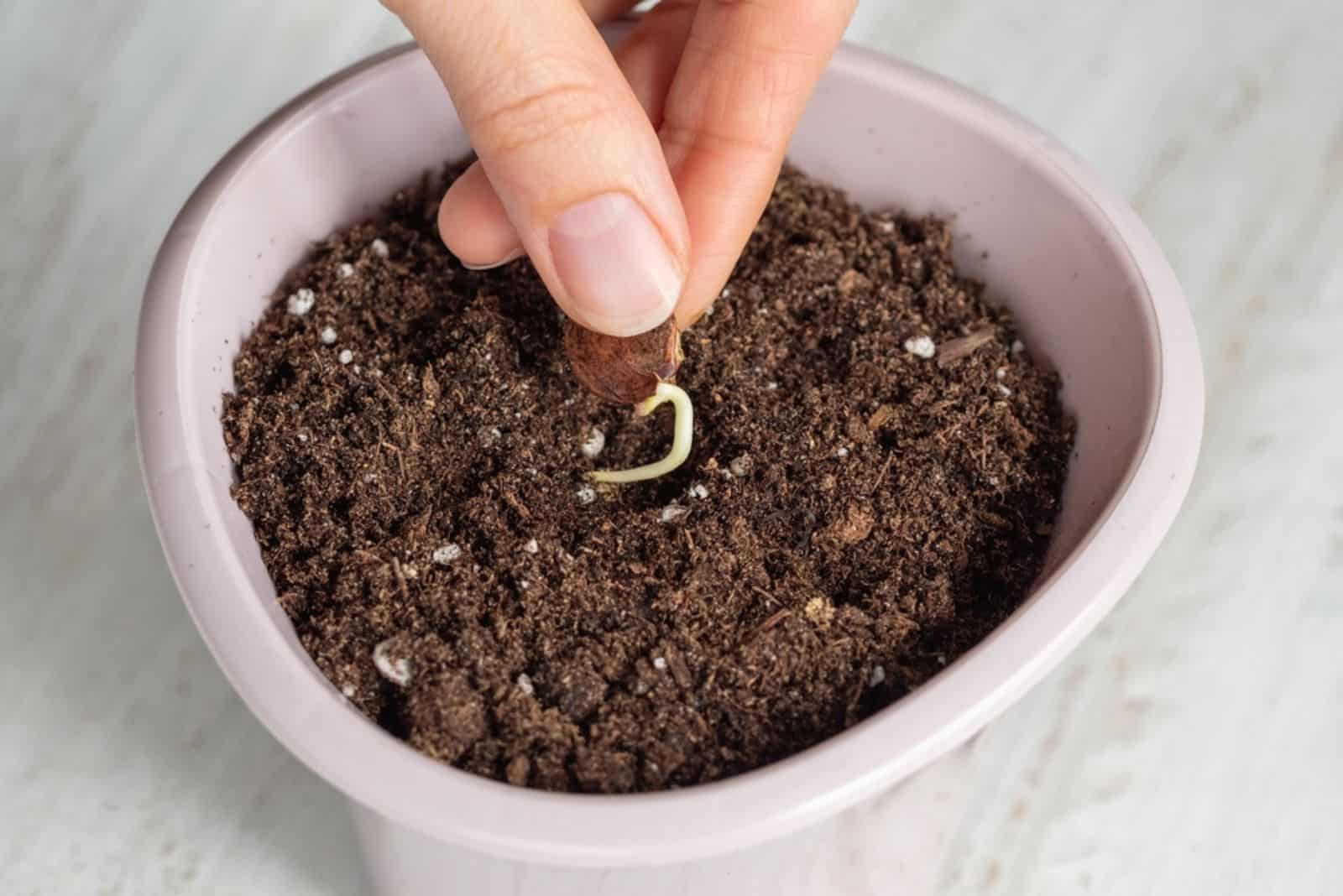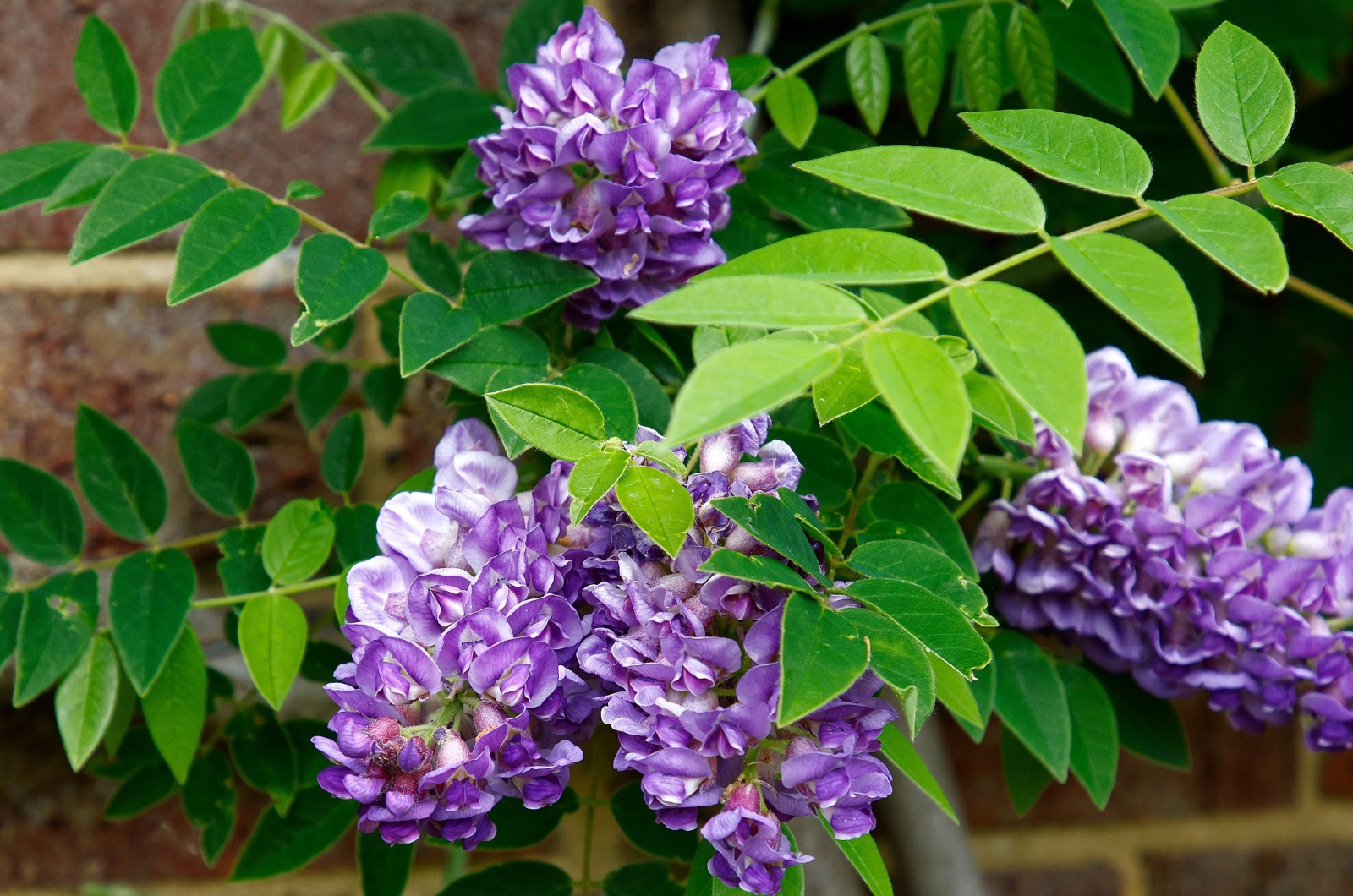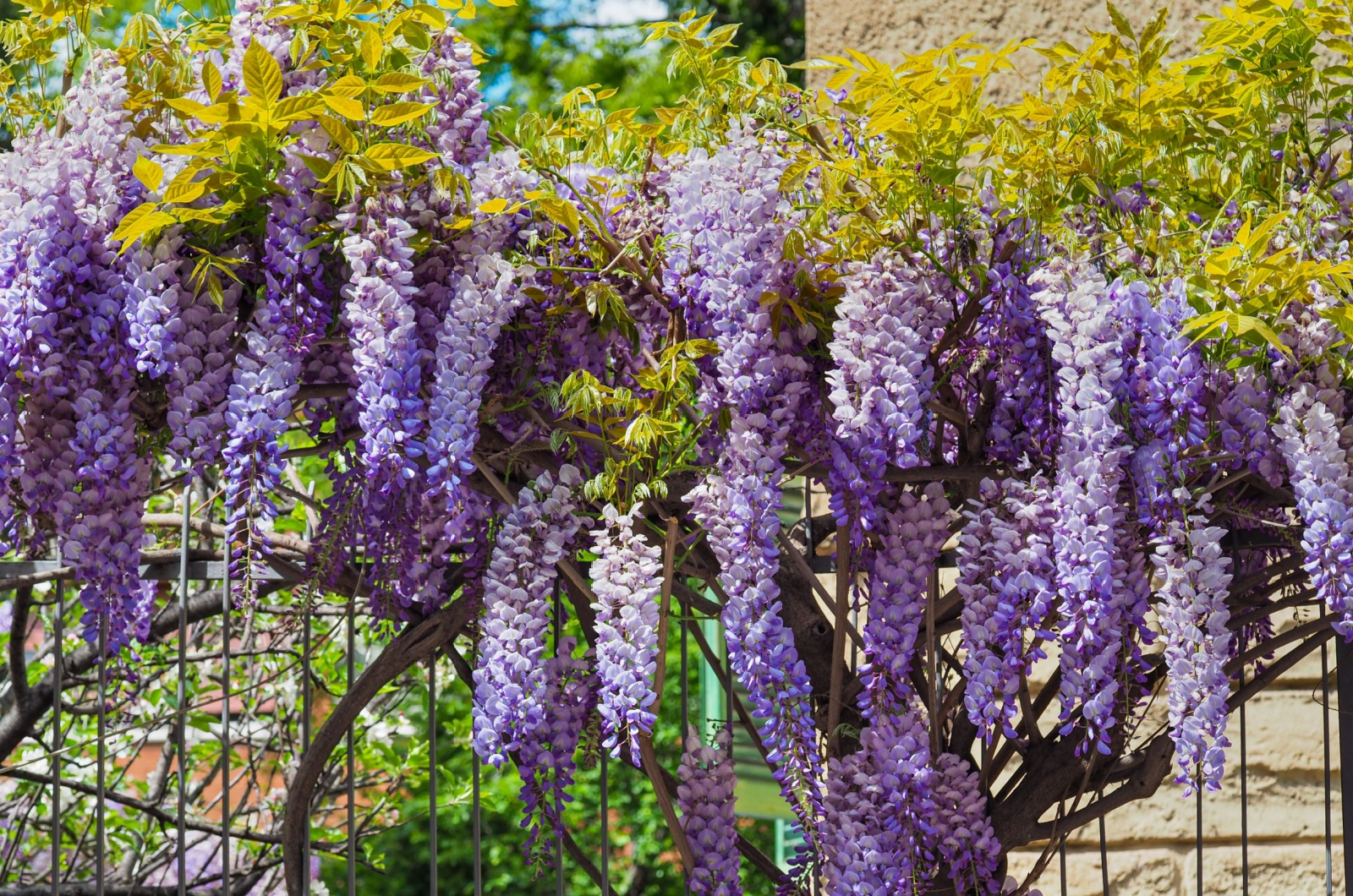Have you ever seen a wisteria in full bloom? If so, I’m sure you were enchanted by its cascading vines and fragrant, vibrant clusters of flowers. No wonder so many growers choose to add this splendid flower to their outdoor space!
If you’re one of them and want to know how to grow your own wisteria, you have come to the right place. I’ll show you how to tame the wild nature of this plant and also give you tips on planting and maintaining it.
Let’s dive straight in!
How To Control Wisteria Growth
Learning how to care for wisteria isn’t the first thing you should do if you decide on this plant. It’s actually learning how to control the growth because the two most popular wisteria varieties, sinensis (Chinese wisteria) and floribunda (Japanese wisteria), are invasive. (1)
These plants grow aggressively and pose a threat to the surrounding infrastructure. Additionally, they destroy trees and native plants.
When it comes to these plants, authorities recommend choosing alternatives that are native to the US.
This doesn’t mean you can’t grow wisteria in your garden, but you’ll need to prune it and monitor its growth.
Let’s see how to do it!
Tips For Pruning Wisteria Wine
If you decide on either of the two species mentioned above, you’ll need to prune them twice a year. This will prevent their roots from spreading too aggressively.
You can also use these tips if you cultivate native wisterias and you have a specific shape in mind or want to enhance blooming.
How To Prune In Summer
These plants start generating their first blossoms in April and the flowering season typically lasts until May.
Once the blossoms start to fade, it’s time for the first pruning.
Your first goal is to trim the new shoots to approximately 6 inches. You also need to remove unnecessary shoots from the central vine.
If you notice some suckers have developed from the roots, which will most likely happen, you need to remove them too.
How To Prune In Winter
Your wisteria won’t stop growing after the first trimming. This is actually a critical period because the plant becomes unwieldy.
Wait until late winter and start pruning. Pruning during this period is also great because you can easily see the branches as the wisteria loses foliage.
First, you need to select the lateral branches that develop from the central trunk. Remove them and leave only branches that have no more than 5 buds.
At this point you can also prune to get the desired shape because crowded branches don’t look attractive on wisterias.
Containing The Roots
These plants can grow up to 30 feet tall. To ensure stability, they generate extensive anchoring roots.
These roots are actually what destroy surrounding infrastructure. The main problem is that this plant can develop from a single root fragment. With this in mind, it would be best if you contained the roots as well as the vines.
Do not plant your wisteria near any structures it could possibly destroy. This includes walls, pathways, and plumbing.
You can redirect these roots by placing corrugated metal sheeting near the surrounding infrastructure.
You can also pot your wisteria, which I highly recommend!
If you want to replace in-ground wisteria with a noninvasive plant, you must be very careful when removing it. Unfortunately, removing each of the roots manually isn’t possible.
You need to cautiously trim the trunk as close to the ground’s surface as possible. Then you need to apply herbicide straight to the damaged area.
Varieties To Select
Wisterias will make a wonderful addition to your garden, especially if you want a scented garden. But to avoid damage, you should choose native wisteria species such as frutescens or macrostachya.
Let’s find out more about them!
Wisteria frutescens (American wisteria)
A southeastern United States native, the frutescens species is a tall type of wisteria that can reach 30 feet if its growing requirements are met. It responds best to the conditions in USDA hardiness zones 5 through 9.
The flowering season of this species starts in late spring, but the best thing is that it can reward you with another set of purple-blue blooms in mid or late summer.
Some of the best cultivars include Nivea, which has massive white blossoms, and the popular Amethyst Falls, which has captivating and fragrant purple flowers.
Wisteria macrostachya (Kentucky wisteria)
This is a hardy wisteria variety that can be successfully grown in USDA zone 3. The flowering season of this variety starts later, typically in June.
It can reach 25 feet tall and generates 3 sets of blossoms throughout the season.
Some of the best cultivars to select include Blue Moon and Aunt Dee, which have blue-violet blossoms, and Clara Mack, which produces white blossoms.
Wisteria Growing Guide
This plant species needs a lot of sun exposure to flourish, so the south or western parts of your garden will work best. You can expect an abundance of splendid flower clusters as soon as spring arrives.
Whenever you see wisteria, you know that the long and cold winter is gone and better times are coming!
We’ve seen that this plant can grow up to 30 feet tall and generates pinnate leaves that appear at the same time or after the blossoming season ends.
Wisteria will keep producing blossoms and their number will increase every year. However, you need to meet all the wisteria’s requirements if you want a happy and thriving plant!
Let’s see how to do it!
Where To Plant
There are two things to pay attention to when planting wisteria. The first one is to move it from surrounding infrastructure, and the second is to find it a sunny spot with southern or western exposure.
Even though this plant can tolerate partial shade, it will respond best to full sun.
Tips On Planting
You can either plant your wisteria in spring or summer. This plant needs moist and free-draining soil rich in organic matter. You can add compost to ensure more nutrients.
The next step is to dig a hole deep enough to accommodate the root ball, and twice as wide.
Put your wisteria root ball in the hole, add more soil, and give it a good soak. To suppress weeds and aid moisture retention, add a layer of mulch on the soil surface.
If you want to add more wisterias, make sure there is approximately 10 feet between each plant.
Ensure Support
Wisteria has a vining growth habit but the vines can’t climb on a wall or similar structure unless you provide support.
This is an excellent climbing plant for fences but you can also use trellises or arbors as structural support.
Tips For Growing Tree Wisteria
One of the best features of wisterias is that you can train them into a tree.
Here’s how:
1. When planting, take a wooden stake and put it in the ground at a depth of approximately 12 inches, making sure you leave about half an inch between the stake and the wisteria trunk.
2. Use tie tape to secure the stake to the trunk every 7 inches. Be careful not to inhibit trunk development.
3. You’ll need to put new tie tapes as your wisteria develops further. You’ll also need a bigger stake with time.
4. You can prune unruly branches during the season; as soon as the flowers start to fade, you need to give the tree a hard pruning.
You’ll need to prune new shoots to approximately 6 buds per branch no matter which species you cultivate.
How To Grow Potted Wisteria
One of the easiest ways to avoid the damage that wisteria roots can cause is by growing the plant in a pot.
This lavender look-alike isn’t hard to maintain but there are a few things to consider. First, when buying your wisteria, aim for ones with a single stem. Additionally, you’ll need a pot that is slightly larger than the one the plant came in.
Fill a new pot with rich, well-draining soil and put your wisteria in it. Don’t forget to install a robust stake and secure it to the trunk. A stake that’s 5-6 feet tall will suffice.
As your plant develops further, keep securing it to the stake. The plant will eventually become taller than the stake, and then you’ll need to remove its top.
It’s best to prune your potted wisteria’s new growth in late winter to approximately 6-12 inches.
If you decide to grow your wisteria in a container, be sure to frequently repot it. Remember that this is a vigorous grower and will quickly overgrow the pot.
Pay attention to the soil moisture content and irrigate your wisteria when the topsoil dries out. Feed it with all-purpose fertilizer at the beginning of the growing season (spring).
Wisteria Special Requirements
I would like to share more tips on growing wisteria plants so you can prevent issues such as leaf discoloration.
Grooming
Your wisteria will need constant pruning in summer and late winter. This is the only way to prevent it from spreading too fast.
This will also encourage the plant to generate more blossoms throughout the season.
Watering And Fertilizing
This plant species won’t grow well in dry soils, so frequent irrigation is essential, especially during hot summer days.
If you secure it to a wall, the watering needs will increase due to the heat the wall emits.
This plant doesn’t require frequent watering in the winter, but as soon as spring arrives, your wisteria needs regular irrigation to generate more blossoms.
Wisterias planted in-ground will benefit from a balanced fertilizer applied approximately 3 times during the growing season.
How To Propagate Wisteria
Many growers ask if this plant can be grown from seeds, and the answer is yes! Wisteria seeds need to be soaked for 24 hours before you plant them.
The only problem with growing wisterias from seeds is that the plant doesn’t produce any blossoms. There are certain cases when blossoms occur, but only in plants that are about 20 years old.
Propagating wisteria from hardwood cuttings will give the best results. Plant them when the flower buds swell, which typically occurs at the end of the winter. Alternatively, use other propagation methods such as grafting on rootstocks.
Wisteria Problems
Just like all other plants, wisterias can struggle with growth or display changes in appearance if something is wrong.
For instance, if there aren’t any blossoms on your wisteria, the temperatures may be too low.
Lack of blossoms in young wisterias isn’t a problem since these plants take a few years to develop the first flowers.
If your wisteria displays yellow foliage, you should check the nutrient level in the soil. To fix this wisteria problem, simply apply a balanced fertilizer.
Although rare, black spots can appear on wisteria foliage. This is most likely the result of fungal infection, and you can fix it by applying fungicide.
If you hate pests, then wisterias are perfect for you because they rarely face infestation.
Wisteria Vine Growing: Are You Up For The Challenge?
Are you ready to embark on a journey filled with all the joys of gardening, but also challenges? Wisteria is undoubtedly one of the most captivating flowering species out there and will transform your garden into a true masterpiece.
However, make sure to prune this vigorous grower because it can quickly overtake your outdoor space otherwise.
Just follow our guidelines for a thriving and harmless wisteria!
Until next time.
References
1. Wisteria – University of Florida, Institute of Food and Agricultural Sciences. (n.d.). https://gardeningsolutions.ifas.ufl.edu/care/weeds-and-invasive-plants/wisteria.html#:~:text=Wisteria%20is%20a%20perennial%20vine,others%20and%20even%20killing%20trees.

